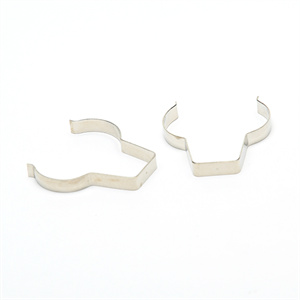Fourslide Multislide Stamping is a metal stamping process that uses a four column stamping machine for stamping and forming. This process is mainly used for the processing of small metal parts, such as metal parts in industries such as automobiles, electronics, home appliances, and communications.The characteristic of Fourslide Multislide Stamping is the use of a four column stamping machine, which has high accuracy and stability, and can complete various complex shapes and sizes of metal stamping and forming processing. Meanwhile, due to its high processing efficiency, it can significantly improve production efficiency and reduce production costs.
In addition, Fourslide Multislide Stamping can also adopt automation technology to achieve automated feeding, processing, and discharging, further improving production efficiency and product quality. Therefore, Fourslide Multislide Stamping has been widely used in the metal processing industry.
Overall, Fourslide Stamping is an efficient, high-precision, and highly automated metal stamping process suitable for the processing and manufacturing of small metal parts.
Fourslide Multislide Retaining Spring offers the following features and advantages:
Precise fixation performance: the four-slider and multi-slider design can realize more accurate and stable fixation of the object and ensure that the object is not loosened under various working conditions.
Good elasticity and resilience: the material and structure of the spring enable it to have excellent elasticity, withstand multiple stretching and compression, maintain the fixing effect and extend the service life.
It can adapt to complex shapes: it can be customized according to the shape of the object to be fixed to adapt to different geometric shapes and size requirements.
Wear-resistance: after special treatment or selection of wear-resistant materials, it can reduce abrasion in frequent use and ensure long-term reliable fixing function.
Uniform stress distribution: four-slider and multi-slider structure helps to achieve more uniform stress distribution and avoid damage caused by local stress concentration.
In actual application:
For example, in the field of mechanical manufacturing, it is used to fix precision parts to ensure position accuracy during machining and operation.
In the automotive industry, it can be used to fix interior parts or some key mechanical components.
